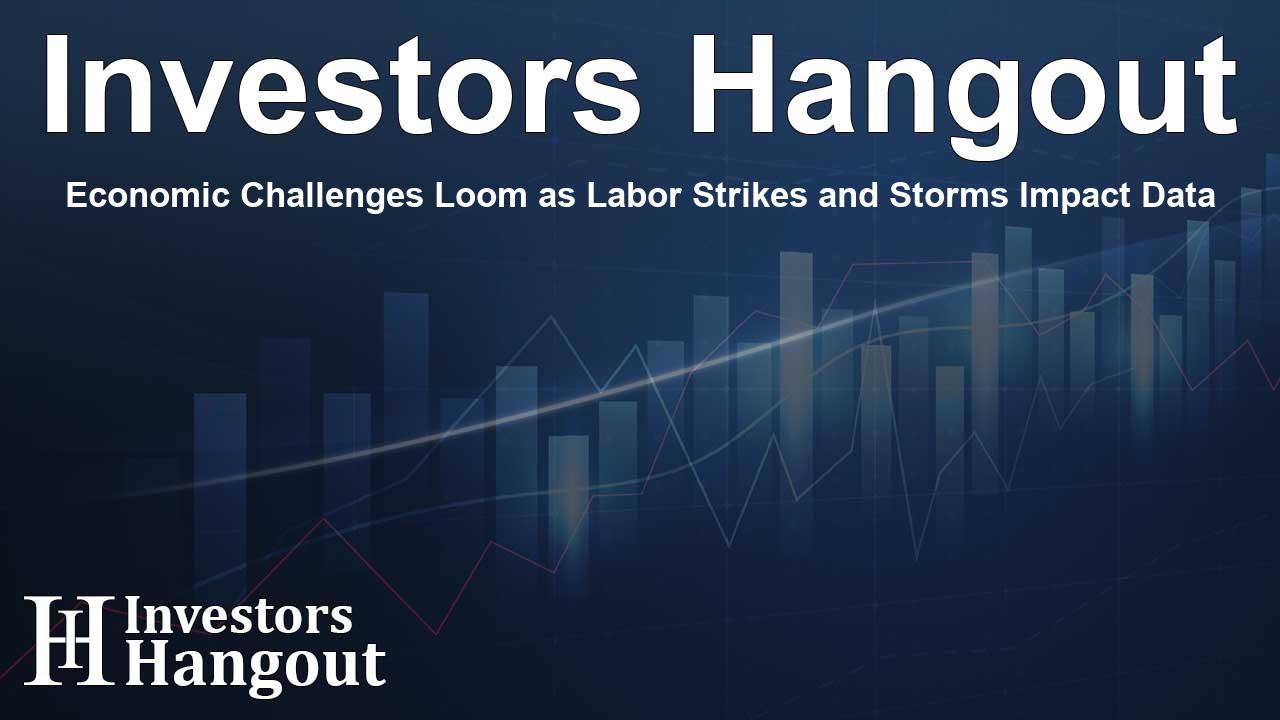Economic Challenges Loom as Labor Strikes and Storms Impact Data

Understanding the Current Economic Landscape
Renowned economist Claudia Sahm, the creator of Sahm’s Rule, recently provided insights into the intricate economic situation currently faced by the Federal Reserve. As the central banking institution explores a period of easing interest rates, numerous factors, such as labor disputes and natural disasters, pose challenges in interpreting economic statistics.
Recent Developments in Labor Statistics
Sahm pointed out that ongoing labor strikes have the potential to significantly influence labor market data. In her conversation with CNBC Overtime, she indicated, “If the strike continues, we might see noticeable changes in the data.” This statement underscores the relevance of labor movements in shaping economic indicators.
Impact of Natural Disasters
Additionally, Sahm drew attention to the complications introduced by recent hurricanes. She articulated the difficulties of separating the impacts of such events from labor statistics. “We’ve faced several hurricanes recently, complicating our understanding of labor market data,” Sahm explained.
What Lies Ahead for Economic Reports
Interestingly, Sahm believes that the upcoming month's data may present a clearer picture, as it is anticipated to be free from significant disturbances that could cloud economic interpretation. Still, she emphasized the importance of forthcoming reports, which will reflect the economic environment after the Federal Reserve initiated its easing cycle.
Monitoring the Effects of Monetary Policy
Sahm stated, “The reports we receive now reflect metrics collected before the Fed adopted lower rates.” She mentioned the importance of tracking the results of the Federal Reserve's recent adjustments, particularly the impact of recent interest rate changes on employment data. “The data after the interest rate cuts will be crucial to analyze the labor market’s response.”
Critical Weeks Ahead
The weeks ahead are set to be pivotal for economic assessments, with one significant job report on the horizon before the next Federal Open Market Committee gathering. Analysts and economists are poised to scrutinize the upcoming figures closely to determine the influence of recent events on labor market performance.
Challenging Conditions from Hurricane Helene and Labor Strikes
Sahm expressed concern regarding the potential complications these developments could create, particularly signaling, “The devastating effects of Hurricane Helene and the impact of ongoing labor strikes raise questions about the clarity of incoming data.” With a critical port strike in its third day, she emphasized the need to account for these varied influences on economic indicators, predicting, “It’s bound to be messy.”
Why Economic Monitoring Is Vital
The resolution of a significant port strike has recently marked a critical shift. The tentative agreement that ended the labor dispute improved working conditions and wages, which could substantially reshape labor market dynamics.
Affected Services from Hurricane Helene
Beyond labor disputes, the aftermath of Hurricane Helene has also wreaked havoc, disrupting utility services and impacting many households across various regions.
The forthcoming September jobs report is crucial for understanding how these issues may influence future decisions around interest rates by the Federal Reserve. The economists have speculated a slight dip in nonfarm payrolls, which could bear considerable weight on the Fed's policy outlook.
Frequently Asked Questions
What is Sahm's Rule?
Sahm's Rule is an economic indicator designed to signal when the economy is entering a recession by analyzing labor market data.
How could labor strikes affect the economy?
Labor strikes can lead to significant disruptions in workforce availability, impacting productivity, wages, and overall economic output.
What are the implications of Hurricane Helene?
Hurricane Helene has caused considerable damage, influencing utility services and disrupting supply chains, which may affect economic data interpretations.
Why are interest rates significant in economic discussions?
Interest rates set the cost of borrowing, which influences spending, investment, and overall economic growth.
What indicators should investors watch for economic health?
Investors should monitor employment reports, inflation rates, and labor market statistics to gauge overall economic health.
About Investors Hangout
Investors Hangout is a leading online stock forum for financial discussion and learning, offering a wide range of free tools and resources. It draws in traders of all levels, who exchange market knowledge, investigate trading tactics, and keep an eye on industry developments in real time. Featuring financial articles, stock message boards, quotes, charts, company profiles, and live news updates. Through cooperative learning and a wealth of informational resources, it helps users from novices creating their first portfolios to experts honing their techniques. Join Investors Hangout today: https://investorshangout.com/
Disclaimer: The content of this article is solely for general informational purposes only; it does not represent legal, financial, or investment advice. Investors Hangout does not offer financial advice; the author is not a licensed financial advisor. Consult a qualified advisor before making any financial or investment decisions based on this article. The author's interpretation of publicly available data shapes the opinions presented here; as a result, they should not be taken as advice to purchase, sell, or hold any securities mentioned or any other investments. The author does not guarantee the accuracy, completeness, or timeliness of any material, providing it "as is." Information and market conditions may change; past performance is not indicative of future outcomes. If any of the material offered here is inaccurate, please contact us for corrections.